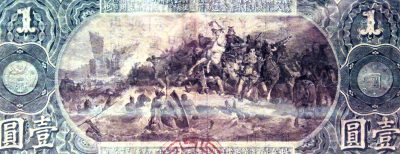Kishida Disaster: Yen Reaches 161 to the Dollar (Nikkei Boon to Poverty)
Kanako Mita and Sawako Utsumi
Modern Tokyo Times

Prime Minister Fumio Kishida of Japan took office in early October 2021. At this time, the Yen was 110 to the Dollar. However, it is now a staggering 161 Yen to the Dollar.
His “do nothing approach” along with his empty “new capitalism” – while seeking to double military spending despite the horrendous debt mountain – says everything about his administration.
Naturally, with Japan continuing to print money like “no tomorrow,” the Bank of Japan is tied by the mega debt mountain. Accordingly, the Bank of Japan knows that increasing the interest rate significantly – from its usual moribund self – will entail high debt repayments.
In May, the Kishida administration broke the unwanted record of 2 years of continuous decline in real wages (figures are announced monthly).
Lee Jay Walker (Modern Tokyo Times analyst) says, “Wealthy Japanese nationals and foreign investors are getting richer via the stock market and are buying real estate. In the opposite direction, there was a record 24 months of a decline in real wages. Therefore, the gap between the rich and poor is growing under Kishida’s ‘new capitalism’ – which is a sham via fake progressive words.”
Reuters reports, “The U.S. dollar hit a near 38-year high to the yen on Tuesday following a surge in Treasury yields as investors contemplated prospects of a second Donald Trump presidency.”
Japan intervened in the currency market from late April to early May. This happened when the Yen reached 160.82. However, this 9.8 trillion Yen ($60 billion) effect is back to the same high level once more.
In the 1990s, the labor market entered a period of deregulation. Accordingly, with stagnant wages and reduced working rights since this period, approximately 40% of the workforce are non-regular workers.
The International Monetary Fund (IMF) said, “Japan’s unemployment rate remains relatively low compared to other OECD countries. However, Japan’s poverty rate among the working-age population is one of the higher ones among OECD countries. The public assistance program in Japan does not provide adequate income support for the working poor and creates inherent work disincentives.”
The Nikkei stock exchange is currently 40,000 and making ample profit for the rich (internal and foreign investors). However, real wages have declined each month for 2 continuous years (figures are announced monthly) under Kishida.
Thomas Sowell famously said, “The rich can more easily convert their assets from money into things like real estate, gold, or other assets whose value rises with inflation. But a welfare mother is unlikely to be able to buy real estate or gold.”
Average wages in Japan ranked 24 out of the 35 leading nations according to the OECD (2021) report. This is far from being a potent G7 nation.
The minimum hourly adult working rate (Yen to Pound rate in May 2024) is 950 Yen (£4.89) in the majority of prefectures in Japan. This compares with £11.44 (2231 Yen) in the United Kingdom. Therefore, the minimum hourly rate in Tokyo of 1113 is also little compared with many developed nations.
It also should be mentioned that people in Japan need to pay a 10% consumption tax every time they go shopping for food and other essential items (fruit and other foodstuffs are higher in Japan).
Like the decline of the Yen, the Kishida administration is in little hurry to change the equation.

Modern Tokyo News is part of the Modern Tokyo Times group
http://moderntokyotimes.com Modern Tokyo Times – International News and Japan News
http://sawakoart.com – Sawako Utsumi and her website – Modern Tokyo Times artist
https://moderntokyonews.com Modern Tokyo News – Tokyo News and International News
PLEASE JOIN ON TWITTER
https://twitter.com/MTT_News Modern Tokyo Times
PLEASE JOIN ON FACEBOOK